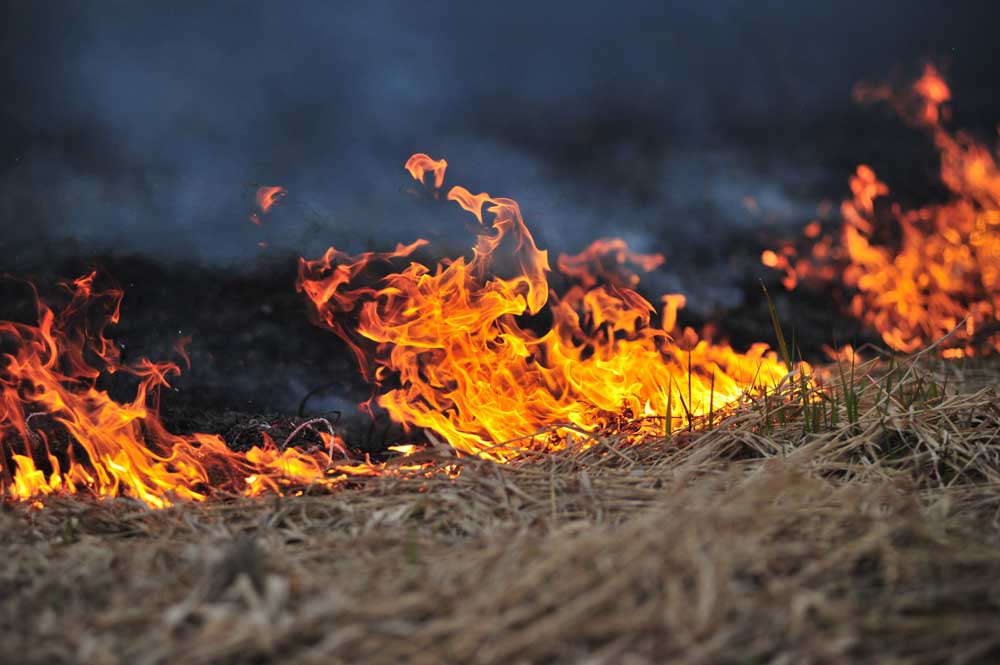Hunting pronghorn with a muzzleloader in an ancient lake bed
Published 12:00 am Monday, September 3, 2018

- Applying for the privilege of hunting pronghorn antelope, it took 13 years to draw the tag. (Gary Lewis/For The Bulletin)
Out in the desert in August, I rock-crawled through juniper-rimmed canyons and around pans, ancient pluvial lakes surrounded by silver sage.
Where that fine Eastern Oregon dust billowed up behind the Ford, the archaic hunters of the Great Basin used to paddle in boats. Talk about climate change. It’s hard to think of a better example of climate change than what occurred right here in the Great Basin.
I imagined each hilltop and ridge as islands or peninsulas when the water began to recede into seasonal lakes in the pans.
It had been 13 years since the last time the state awarded me a tag for pronghorn antelope, and I was intent on taking a buck with a muzzleloader in the style used by the trailblazers, the trappers, the pioneers, the Shoshoni and the Northern Paiutes.
These hunters called themselves the Newe or the Numu, the people. Sometimes they referred to themselves as the Wadatika or ryegrass people.
I found signs of their passage in chipped obsidian flakes on the sides of buttes. On one hilltop, I found an arrowhead with a broken point. Maybe it was used to hunt geese or swans or sandhill cranes. Maybe it was used for antelope. I left it for the next hunter to find.
I settled on three places to hunt. My top choice was a lake in an ancient pan where my friend Troy Boyd and I glassed a nice buck bedded near the water.
Three weeks later, in late August, I joined my friend Terry Rodakowski on a dusty juniper-shaded flat. We would camp together, but hunt solo on public land, miles apart across the desert.
In the cool of the second morning the water was placid and blue, but there was less of it than there had been three weeks ago. Cracked and fissured, the mud was dry at the edges. Down close to the pool, I found the fresh tracks of a coyote and the heart-shaped prints of a pronghorn buck.
From my pack I took a hen turkey decoy and staked it at the water’s edge.
I couldn’t help but smile. She looked out of place in the desert. No antelope had ever seen a turkey at this waterhole.
A pronghorn would feel safe on the approach from the east, looking ahead to the water from the sagebrush. At some point in the last century, someone had dug, piercing the natural pan of this desert basin, heaping up the earth on three sides, to provide access for sheep or cattle no doubt. These fence posts had served a purpose too. They sat forgotten with a coil of barbed wire between two of the posts. Now they would serve my purpose.
Seated between posts, I laid the 54-caliber Hawken-styled Lyman across my knees and removed the nipple.
With a metal pick, I cleaned up the firing channel and dribbled black powder into the touchhole. Screwing the nipple back into place, I pinched a No. 11 percussion cap on and set the hammer at half cock.
Primed against a charge of 100 grains of blackpowder and a 425-grain bullet, I lifted my binocular to scan the slopes.
Bright against the sage stood a buck antelope, across 500 yards of empty pan. It stared toward the water, then trotted a little ways. It stopped again, alert for threats. Its horns were at least double the length of the ears and the prongs were prominent. The buck came on, stopping for brief moments to look ahead and then angled straight toward me.
Using two of the fence posts, I knelt and kept my outline concealed. On the short middle post I rested the rifle.
That’s when the buck saw the turkey decoy and put on the brakes. He gaped at the plastic turkey. Broadside now. Less than 90 yards.
In the dead flat calm, the click of the hammer to full cock startled me. The front sight found the crease behind the foreleg.
Something tripped in my brain. I would take this buck. I committed to treat it well henceforth, to take care of its cape, keep its meat on ice and season it with the right amount of sage, salt and pepper, sometimes frying it in flour and wrapping it with bacon. I’m a man who keeps commitments.
The Lyman’s trigger is a little arc of brass that breaks at about 4 pounds. A heavy rifle, the octagonal barrel balanced muzzle forward, the brass-trimmed crescent of the butt wedged into the outside of my shoulder.
Four pounds of pressure. Smoke blanketed between us, and out of it the buck sprinted then scribed a full final circle in the center of the pan.
I plucked a little sage, what the Numu called sawabi, as I walked toward the buck, this timeless trophy of an ancient hunt. Sawabi would make a good seasoning for the backstraps.
— Gary Lewis is the host of “Frontier Unlimited TV” and author of “Fishing Central Oregon,” “Fishing Mount Hood Country,” “Hunting Oregon” and other titles. Contact Lewis at www.GaryLewisOutdoors.com.








